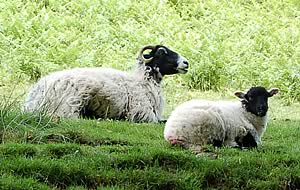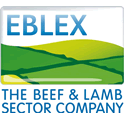|
20/12/06
The serious financial challenge facing the English sheep industry
in the absence of headage subsidies is reinforced in the latest
annual enterprise costings from the English Beef and Lamb Executive
(EBLEX) available at www.eblex.org.uk.
 |
Without these subsidies, the 2005/06 costings results from 49
lowland flocks show only the best making a positive net margin
after all cash-related costs. And more worryingly, even these
made an overall loss when the hidden non-cash costs of unpaid
family labour, rental equivalent value of owned land and interest
on working capital were taken into account.
Altogether in the year ending March 2006 the total costs incurred
by the average lowland breeding flock were over £109 per
ewe, which at the average 135 lambs reared per 100 ewes would
have required a return of more than £80 per lamb sold to
breakeven.
With relatively poor prices during the year, returns averaged
just under £50 per finished lamb and just over £34
per store. As a result the average costed flock made a loss of
over £13 per ewe after cash costs (rising to more than £49
per ewe after the hidden non-cash costs were also taken into
consideration).
However, higher outputs and lower costs enabled top third costed
producers to perform markedly better than the average to achieve
a positive margin of around £5 per ewe after cash costs.
But this translated into a loss of over £21 per ewe when
the hidden non-cash costs were taken into account.
These costings are a wake-up call for the industry, highlighting
the imperative for the sector to prioritise on efficiency improvements.
Without significant progress in this area the returns from English
lamb production clearly remain insufficient to cover the true
cost of production without headage subsidies. All the more so
given the fact that the costed flocks as a whole are known to
be amongst the country’s better performing businesses.
The performance of the top third flocks provides some valuable
pointers to reducing losses and improving profitability through
improved efficiency.
The best flocks reared six more lambs than the average at 141
per 100 ewes. They sold fully 57% of these for slaughter and
only 20% as stores compared to the average flock’s 37%
and 40% respectively. As a result they achieved a 20% greater
output – an extra £12 per ewe. And this for very
similar variable costs.
At the same time, lower fixed and non-cash costs meant overall
costs of under £94 per ewe for top third flocks – an
advantage of around £15/ewe over the average.
As the starting point, EBLEX urges flocks across the country
to take advantage of its new quick and easy Snapshot tool developed
with the Red Meat Industry Forum to compare their own sheep enterprise
performance with the costings standards and identify priorities
for improvement. It is available, together with practical advice
on skills improvement in critical areas of lamb production, free
of charge as part of the EBLEX Sheep Better Returns Programme.
Details can be obtained on 0870 241 8829 or by emailing brp@eblex.org.uk.
 Roast Rage Hotline Fights Festive Fraud Roast Rage Hotline Fights Festive Fraud
 Rare Breeds Survival Trust appoints new Chief Executive Rare Breeds Survival Trust appoints new Chief Executive
 Rare
Breeds Survival Trust Online Rare
Breeds Survival Trust Online
|



